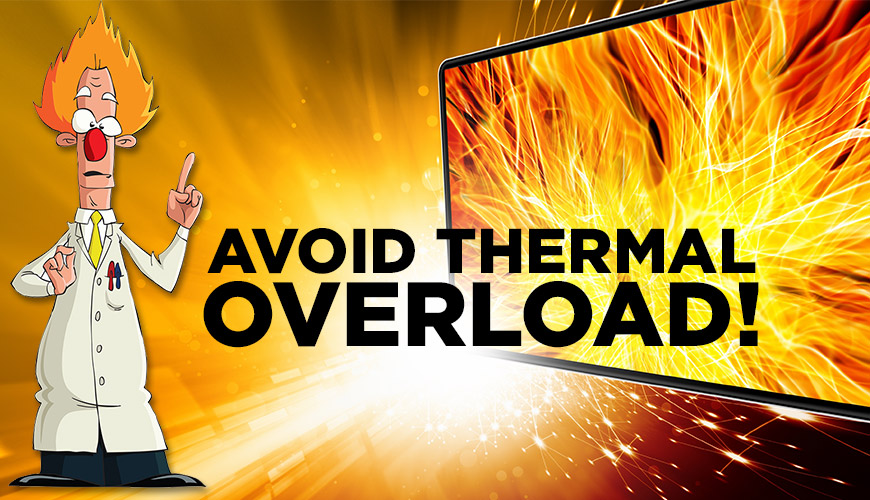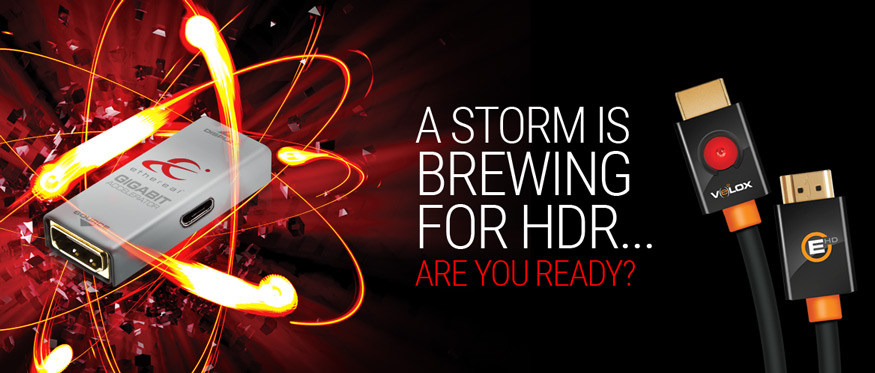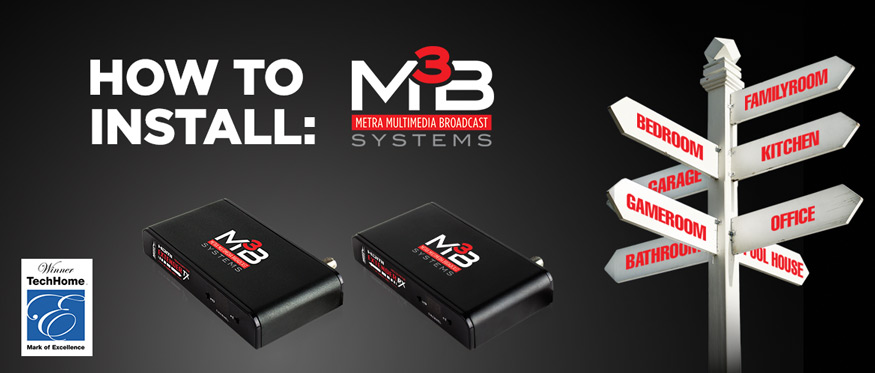
HDMI and Thermal Issues
Tuesday, January 5, 2016 10:03:01 PM America/New_York

Thru the years the complexity of HDMI® based installations have grown, because of this we have seen a marked increase in “system failure” support calls. This can be very upsetting to dealers, consumers and causes stress on the support side.
The most common “system failure” is as follows: everything was working great for about a week or so, then we started to see [insert one/more of the following] sparkles, picture fade, and/or dropping of resolution until there is no picture or sound. Trouble shooting this can be a real problem due to the fact that at our end we rarely can get a truly complete picture of the install over the phone.
We think Thermal Overload is the problem.
HDMI education: What you don't know about the latest technology could cost you
Tuesday, January 12, 2016 7:14:35 PM America/New_York
New releases in the home theater industry’s product technology are never ending! By the time you learn about the latest and greatest technology, it’s already being replaced with something newer and better. What you thought was emerging is now obsolete, and you haven’t even had time to review, no less educate yourself, on all the details of what’s changed.

This can be costly if you don’t know the details of the new HDMI® 2.0 and 2.0A specs. Education is more important than ever due to the hot–button feature everyone is talking about: High Dynamic Resolution (HDR).
With all the hyperbole about this new technology being thrown around, along with the talk about new cable certifications, it’s easy to get confused quickly.
Here’s an example that occurred in our office last week. One of our staff members received a typical sales email from a manufacturer that read:
Dear friend,
Good day. Attached is our HDMI 2.0 HDCP 2.2 100m extender (HDBaseT) for you.
Whoa, wait a minute! HDBaseT has upgraded to HDMI 2.0 and can therefore now support 4k/60, HDR and 4:4:4 color? Without a clear understanding of HDMI 2.0, 2.0A, 4K and HDR, one would think this HDBaseT was something to consider purchasing for use with the new 4K, HDR components because of the “HDMI 2.0” listed spec.
DR, one would think this HDBaseT was something to consider purchasing for use with the new 4K, HDR components because of the “HDMI 2.0” listed spec.A Storm is Brewing for HDR
Wednesday, January 20, 2016 2:24:38 AM America/New_York

High Dynamic Range (HDR) is an advancement in picture quality that will quickly find a market. It will change the AV industry more than any other display technology that has debuted in the last few years. The upgrade to HDR is easy to see by the customer and will establish a foothold in the market quickly due to its stunning dynamic range of brightness — like really, really stunning. HDR creates pictures in the same way that the human eye does and makes videos come to life with shadows and shading details the likes of which we have never seen on other displays. Viewers can instantly notice the difference and begin imagining it in their homes and businesses. Yet, we are facing one problem to implementing HDR — this upgrade has a lot of technology behind it that will not be understood by everyone.
The most prominent issue is that HDR requires the maximum bandwidth specified in the HDMI® 2.0 spec — up to 18Gbps for support of the full–color spectrum and detail it provides. The components, the cables and accessories must all meet the full specification. The problem is that HDMI products can legally state, “supports HDMI 2.0” when they only fall into the minimum specification range of HDMI 2.0 under 10.2Gbps making them unable to support the bandwidth requirement for HDR. Making it even more complicated is that the hardware specification for HDR is HDMI 2.0a. Luckily, making the move from HDMI 2.0 to 2.0a is going to be done with a firmware upgrade on most devices. Therefore, the products that only meet the HDMI 2.0 minimum–specification will not support HDR.
How to Install an M3B System
Friday, January 29, 2016 7:51:48 PM America/New_York

We have made multi–room AV distribution easy with our M3B system and this post will outline out the easy steps to install this system.
You will need to answer the following questions to begin designing and laying out your M3B system:
-
How many sources and displays will be in this system?
There are two primary devices: the source side encoder (M3B–TX1) and the display side decoder (M3B–RX1). You will need one of each of these devices for each source and display in your system.
For example, if you want your DVD player to display on the two TVs in your system, you will need a source side encoder (M3B–TX1) for the DVD player and two display side decoders (M3B–RX1) — one for each TV in the system. -
What is the total amount of COAX you will need for this system?
“RF” components such as Coax, Splitters, and “F” terminations are also needed in addition to your sources, displays, and HDMI® cables.
See Our Weekly Specials
Friday, February 5, 2016 7:16:49 PM America/New_York

Metra Home Theater Group is featuring online product specials for dealers. New products will be showcased every Friday (you must be logged in to view promotional details).
This special is valid online only for registered Metra Home Theater Group dealers. Please login at MetraHomeTheater.com to view this special.
If you’d like to become a Metra dealer, call 1-866-839-9187 or visit MetraHomeTheater.com/apply to sign up and place your order for all your install needs.











